
ROAS Report template for Marketing teams and agencies
Track PPC performance with this PPC ROAS report template. Measure CTR, CPA, and conversion rates. Analyze ad placement, audience, and creative formats. Integrate data from Facebook Ads and Paid Media. Segment by time and demographics for actionable insights. Ideal for marketing teams aiming to optimize their strategy and achieve specific goals.
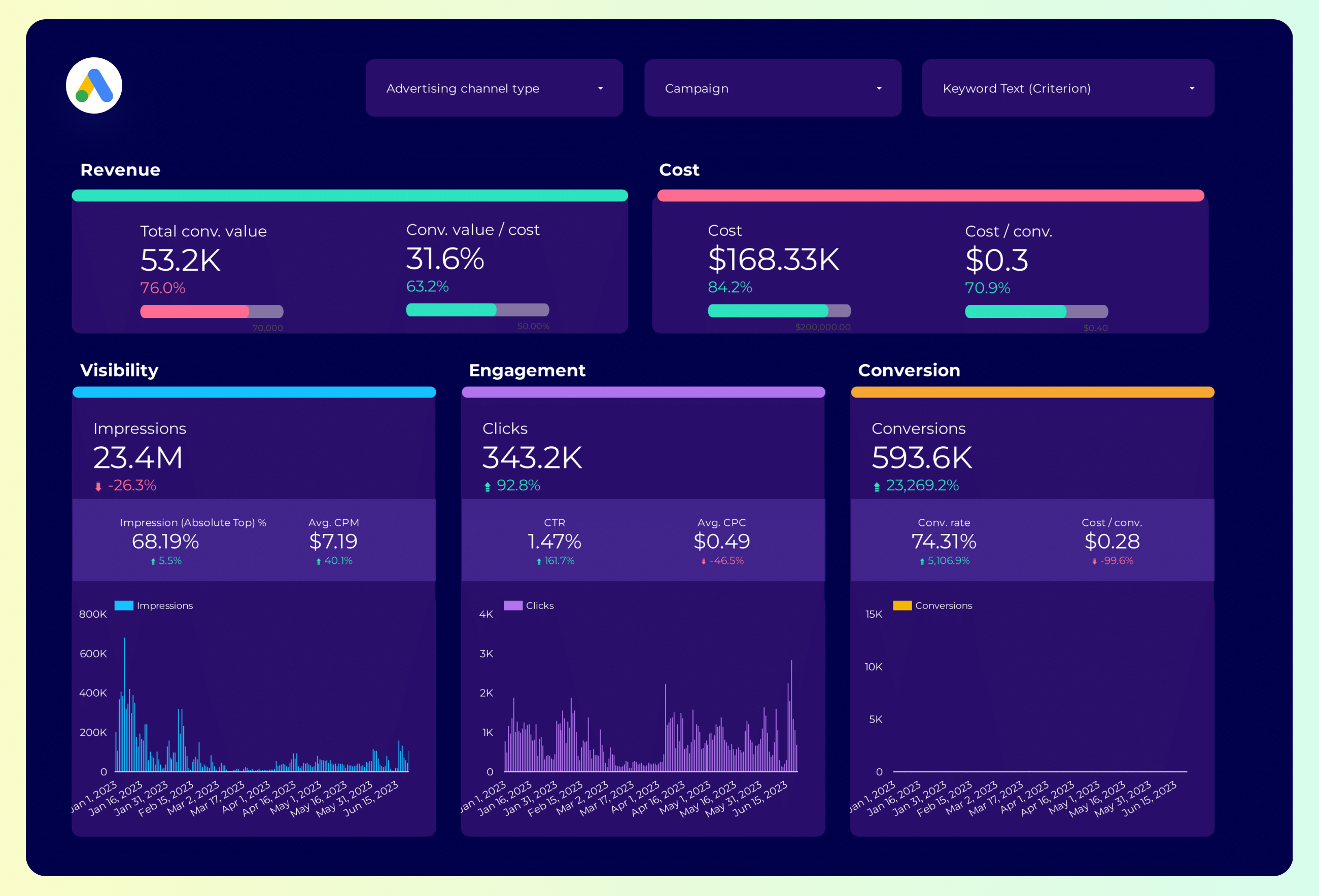
Google Ads Report template for Marketing teams and agencies
Optimize your PPC strategy with this Google Ads report template. Track conversion rate, cost per conversion, and CTR. Analyze by campaign type, audience, and time. Perfect for marketing teams to measure performance and align with objectives. Consolidate data from Google Ads and Paid Media for actionable insights and enhanced campaign management.
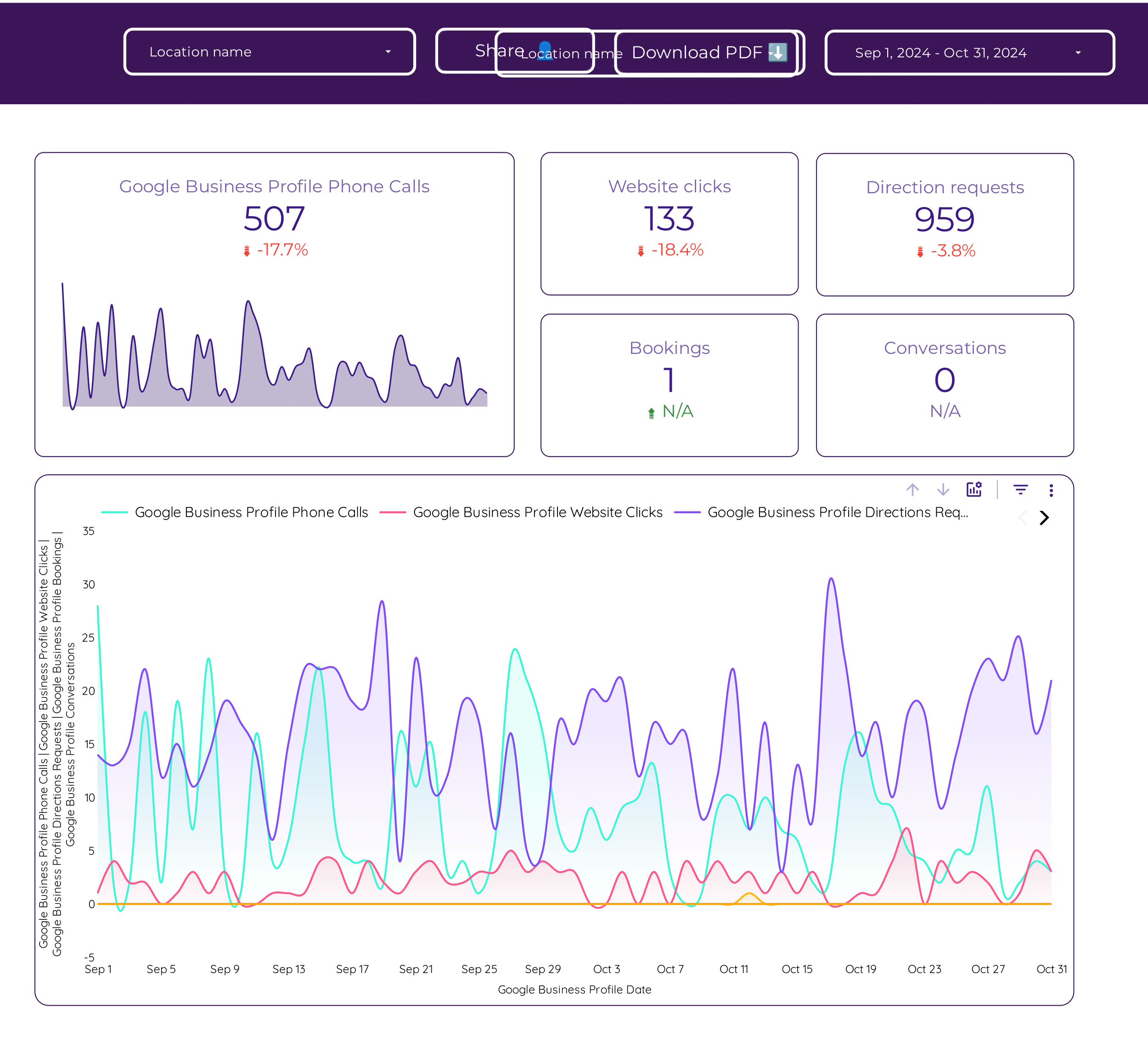
Local SEO Report template for Marketing teams and agencies
Optimize your local SEO strategy with this Local SEO report template. Track CTR, conversion rate, and cost per conversion. Analyze keyword ranking, organic traffic, and local pack visibility. Segment data by demographics, location, and behavior over time. Perfect for marketing teams aiming to achieve specific goals and improve performance.
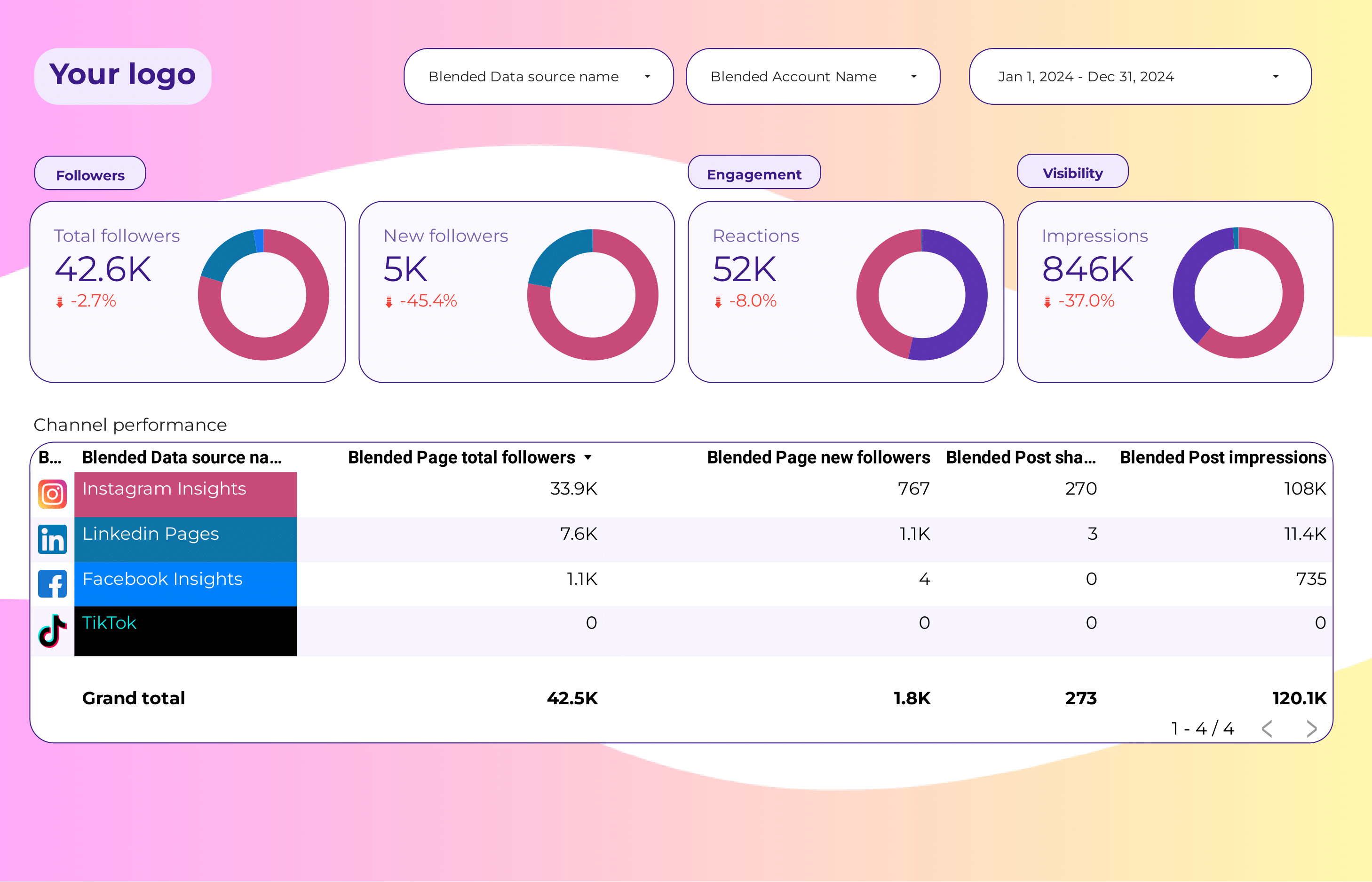
Social Media Report template for Marketing teams and agencies
Optimize your strategy with this Social Media report template. Analyze conversion rates, ROAS, and engagement metrics from Instagram Insights and LinkedIn Pages. Track key metrics like likes, comments, and shares. Segment by audience, age, and location. Perfect for marketing teams to measure performance and achieve specific goals.
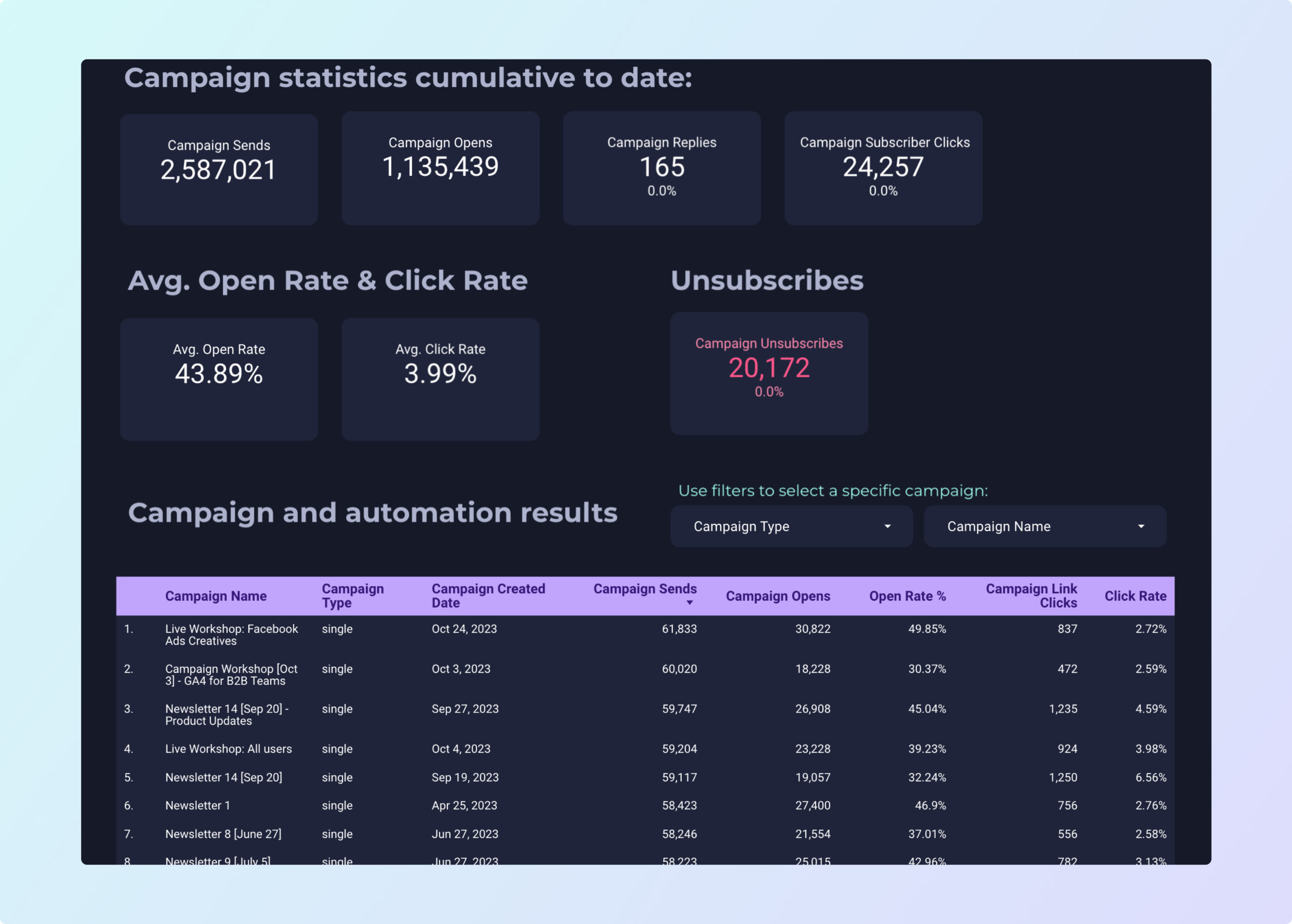
ActiveCampaign Report template for Marketing teams and agencies
ActiveCampaign report template: Track key metrics like click-through rate, conversion rate, and ROI. Analyze customer acquisition cost and average order value. Segment by audience, campaign objectives, and timeline. Ideal for B2B, CRM, and email marketing teams seeking actionable insights through automation.
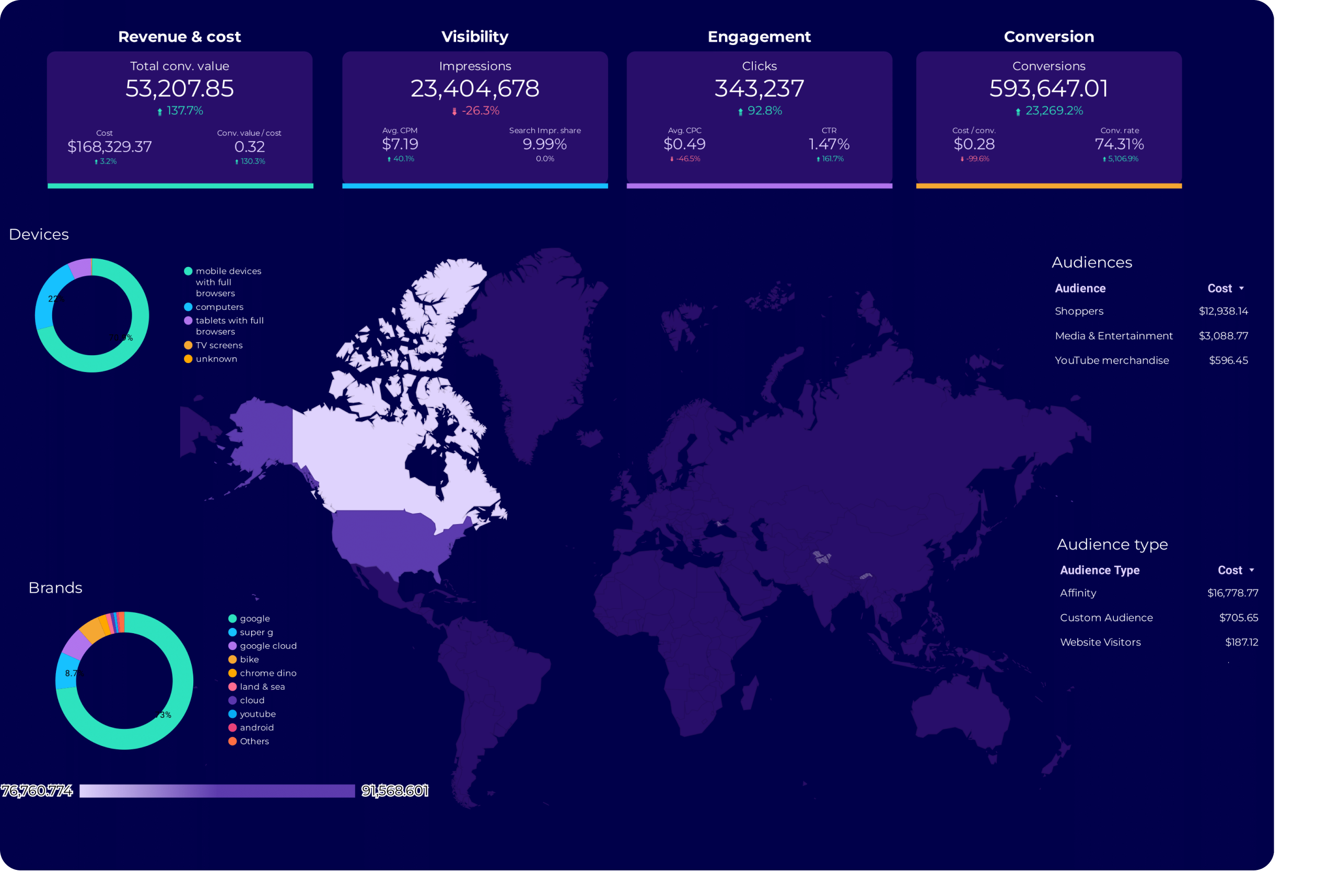
Google Ads Audience Report template for Marketing teams and agencies
Analyze key metrics such as conversion rate, CTR, and engagement with this Google Ads Audience report template. Track audience segments and campaign types over various timeframes. Designed for PPC specialists to measure performance and refine strategies using data from Google Ads and Paid Media.
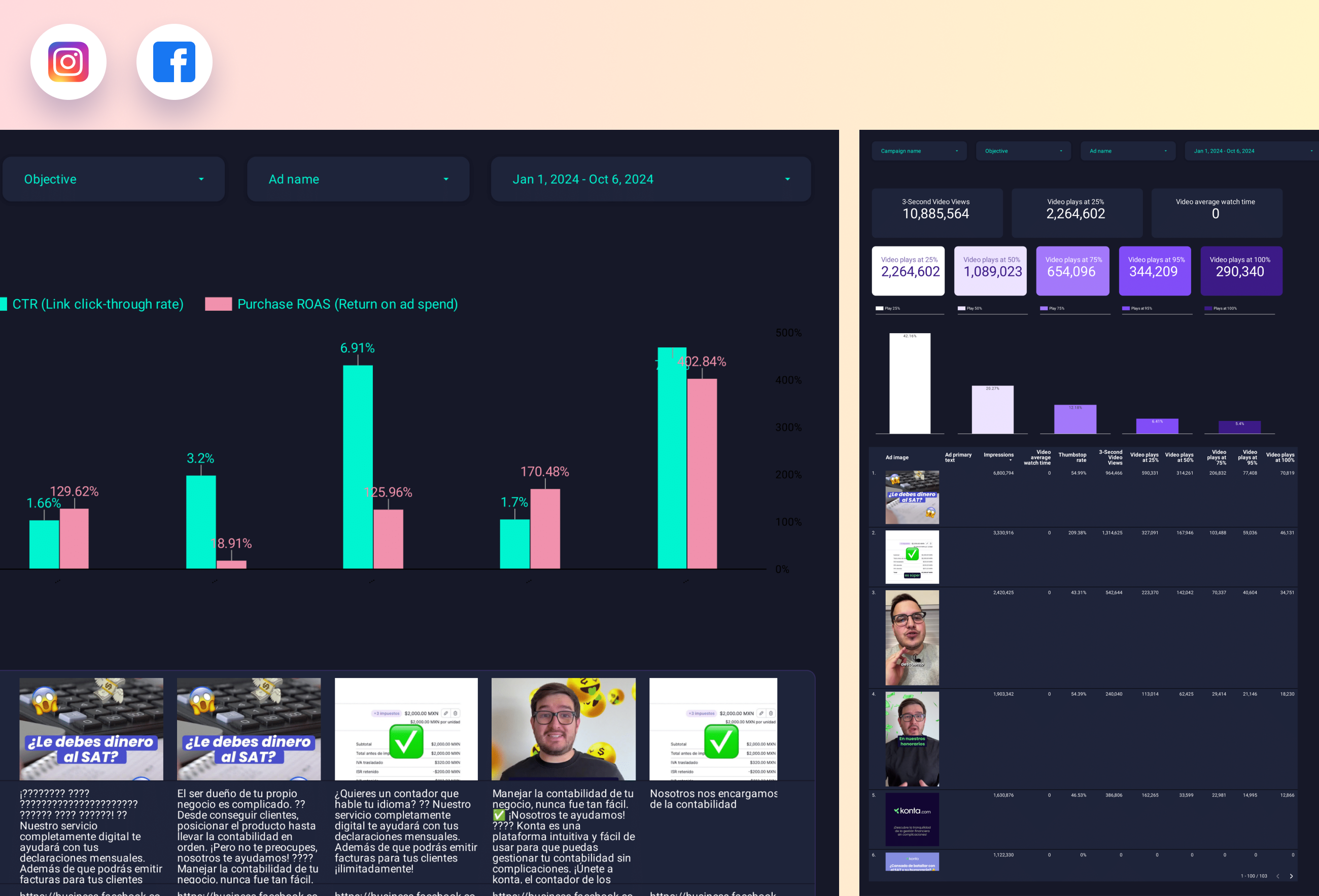
Paid media Creative performance Report template for Marketing teams and agencies
Analyze key metrics with the Paid media Creative performance report template. Measure CTR, CPA, and conversion rates across Facebook, TikTok, and Google Ads. Segment by audience, message, and channel. Track impressions, reach, and engagement. Ideal for marketing teams to refine PPC strategies and meet specific goals.
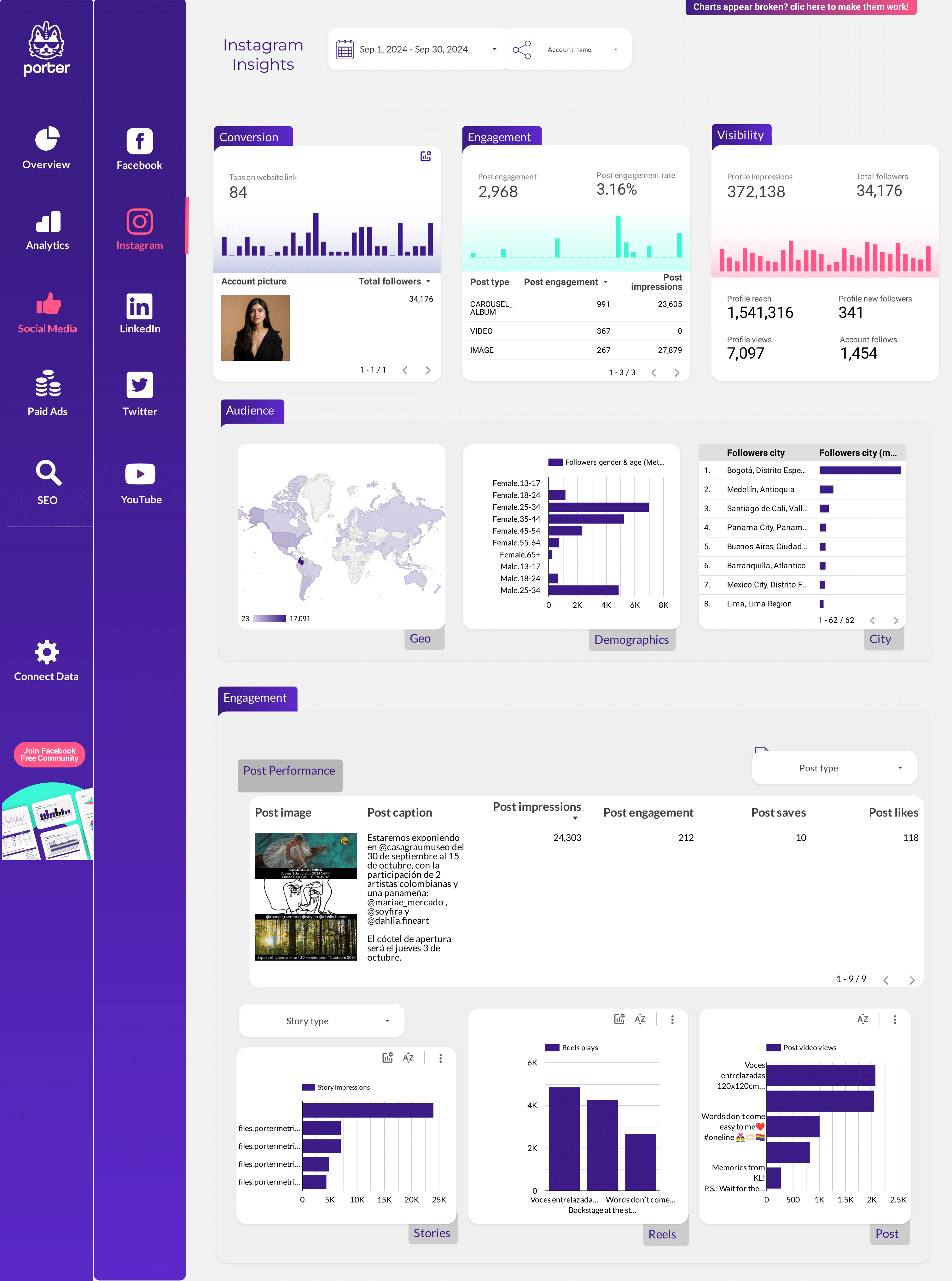
Social Media Client presentation Report template for Marketing teams and agencies
Analyze key metrics with this Social Media Client presentation report template. Track conversion rates, engagement, and audience insights from Instagram and Facebook. Segment data by campaign, demographics, and time. Perfect for agencies to present actionable insights and performance, aligning with marketing goals and strategies.
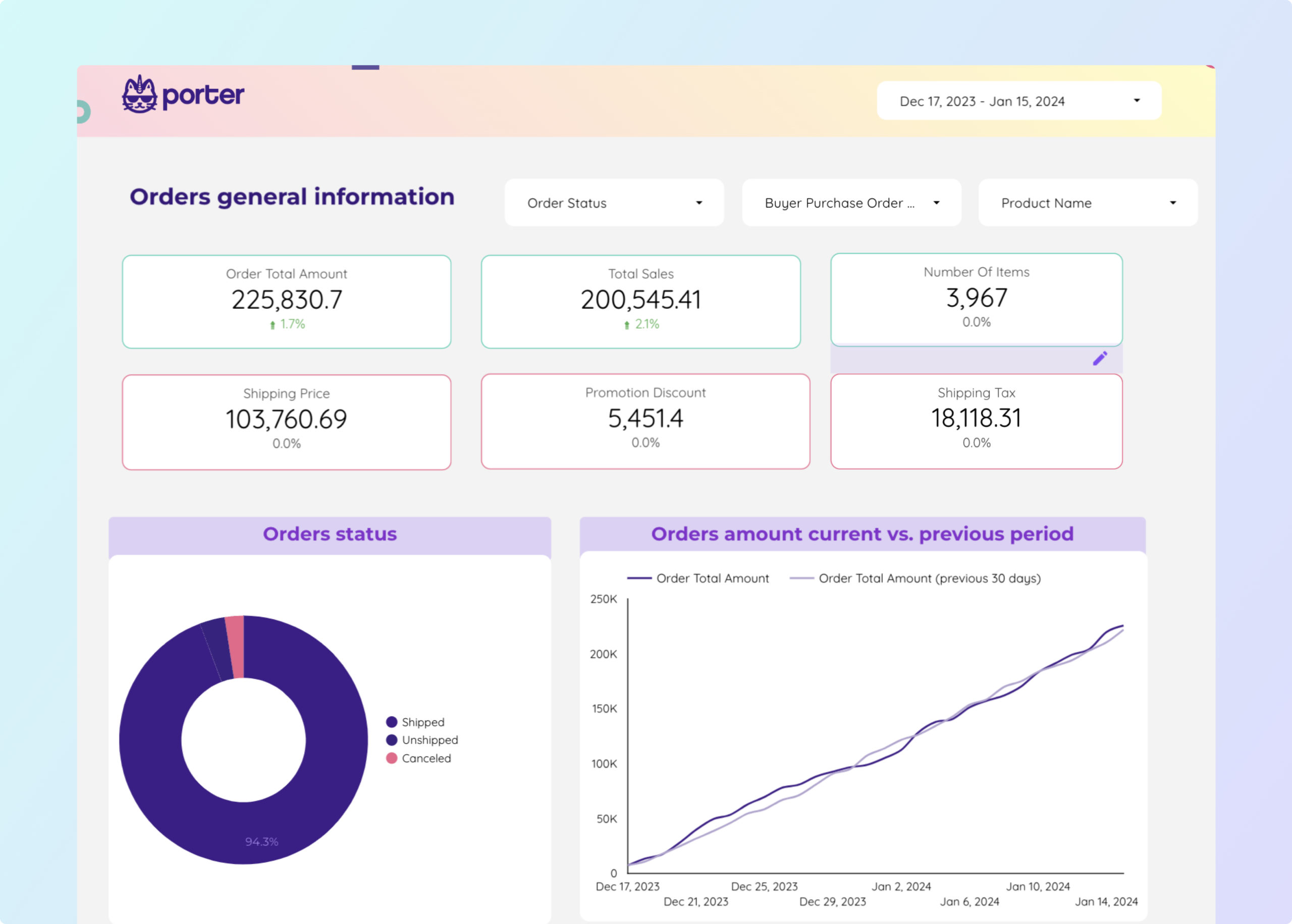
Amazon Seller Central Report template for Marketing teams and agencies
Analyze key metrics with this Amazon Seller Central report template. Track GMV, AOV, and CPA. Segment by demographics, ad format, and time. Perfect for e-commerce marketing teams to consolidate data from Amazon Seller Central. Optimize performance and refine strategies for targeted audiences. Measure success across platforms efficiently.
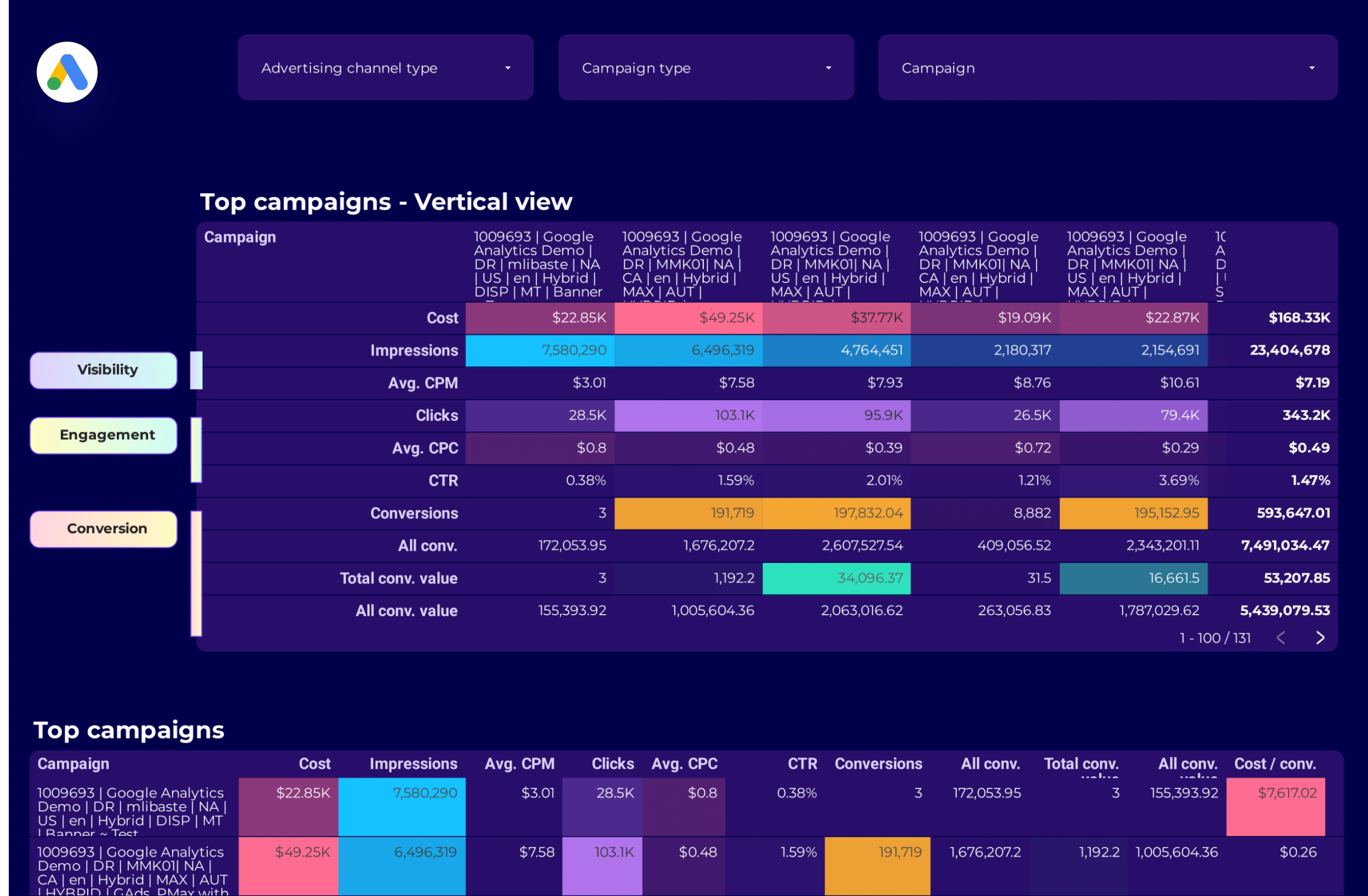
Google Ads Campaign performance Report template for Marketing teams and agencies
Analyze key metrics like conversion rate, CTR, and impressions with this Google Ads Campaign performance report template. Segment by campaign type, audience, and time. Ideal for PPC specialists to track performance and refine paid media strategies. Consolidate data from Google Ads for actionable insights and strategic marketing goals.
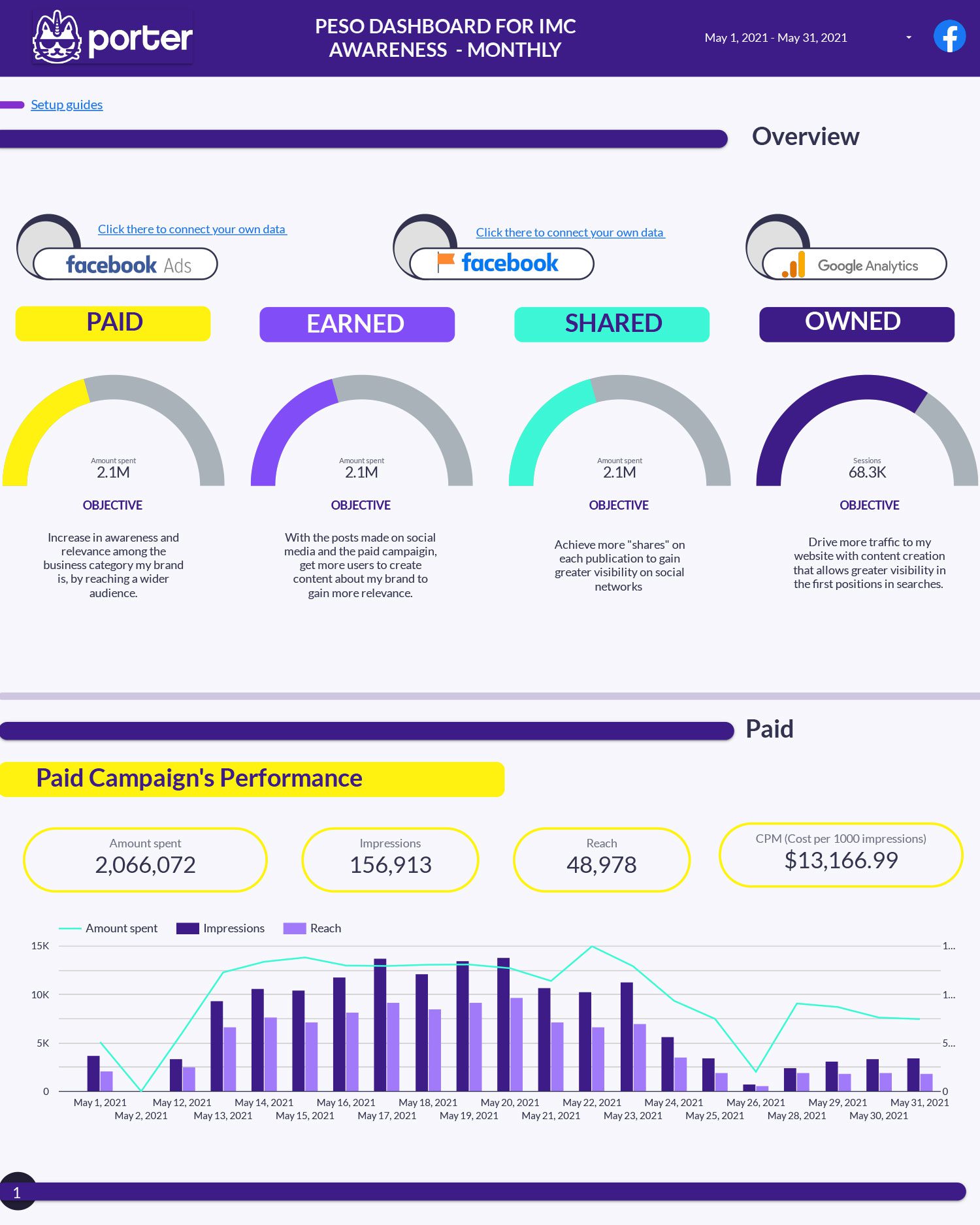
Peso model Report template for Marketing teams and agencies
Analyze key metrics such as leads, conversion rates, and engagement with the Peso model report template. Evaluate campaign performance across Facebook Ads, Instagram Insights, and SEO. Segment by audience demographics and timeframes. Perfect for marketing teams to track e-commerce and social media strategies efficiently.
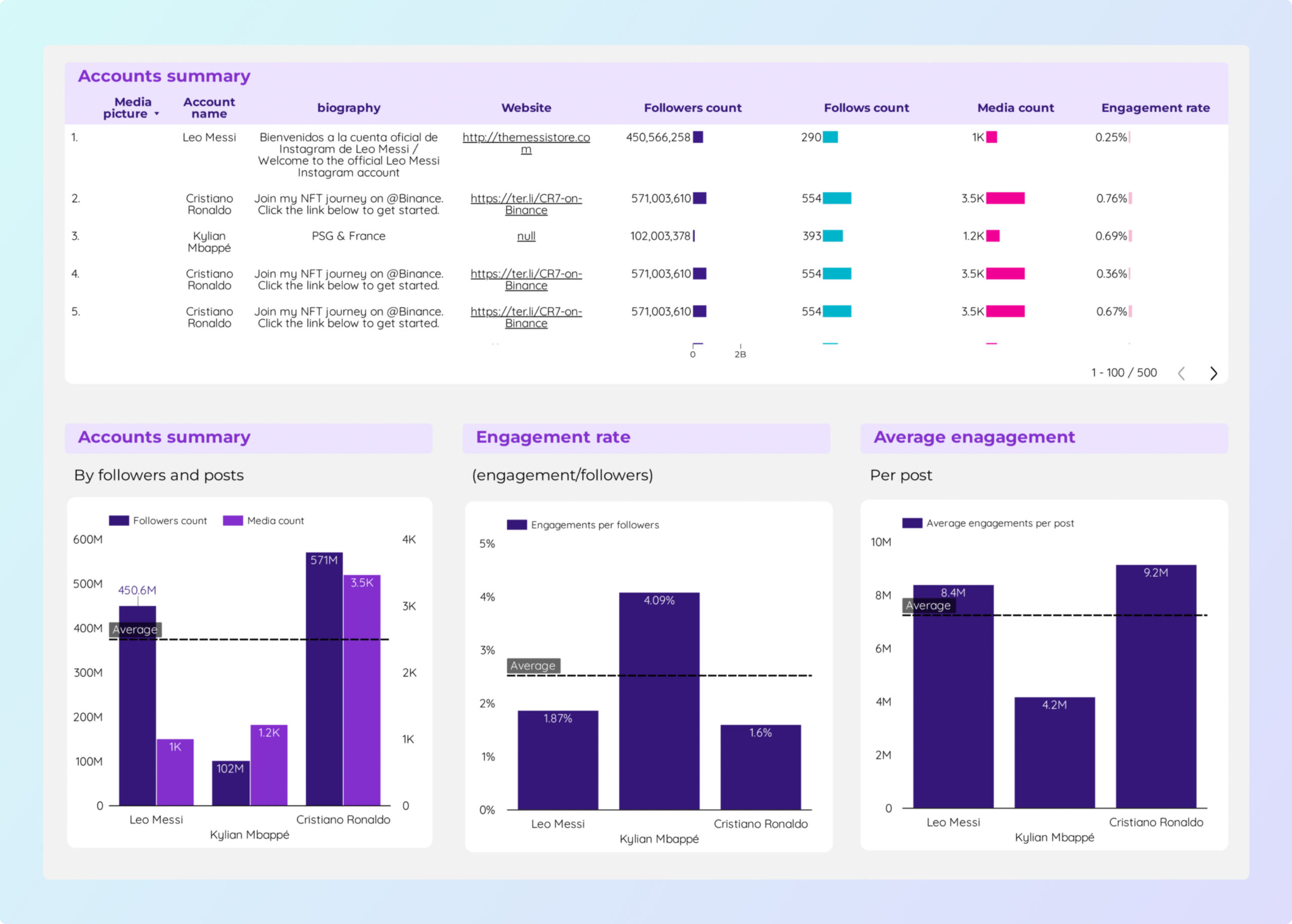
Social Media competitors Report template for Marketing teams and agencies
Analyze key metrics such as CTR, conversion rate, and engagement with the Social Media competitors report template. Utilize data from Social Media and Instagram Public Data. Segment by audience demographics, content strategy, and timeframes. Perfect for marketing teams to assess performance and optimize strategies.
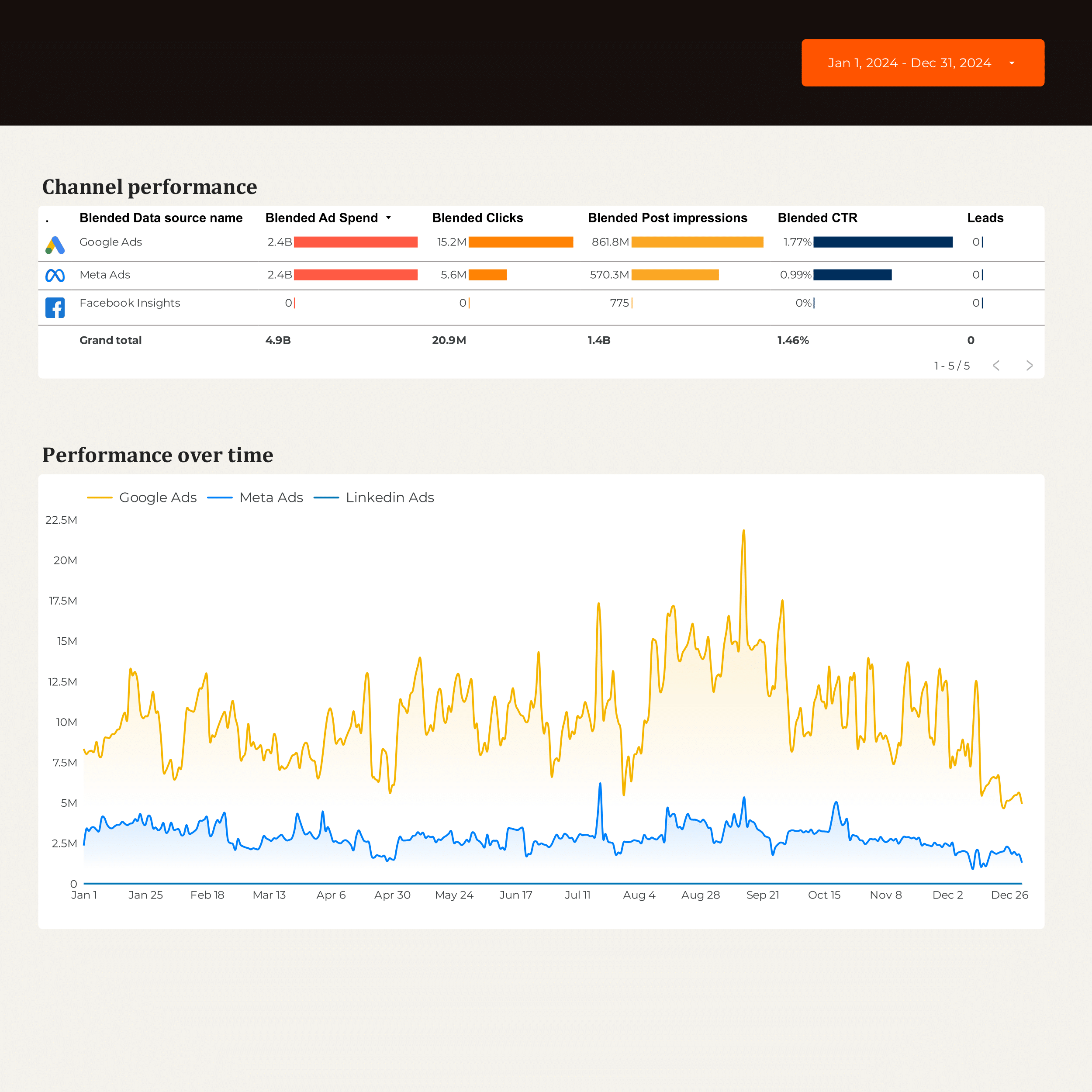
B2B Marketing performance Report template for Marketing teams and agencies
Optimize B2B Marketing performance with this report template. Track metrics like conversion rate, cost per acquisition, and customer lifetime value. Analyze CRM contacts and segment by industry, company size, and location. Ideal for marketing teams to measure and strategize using B2B, CRM, and Email Marketing data sources.
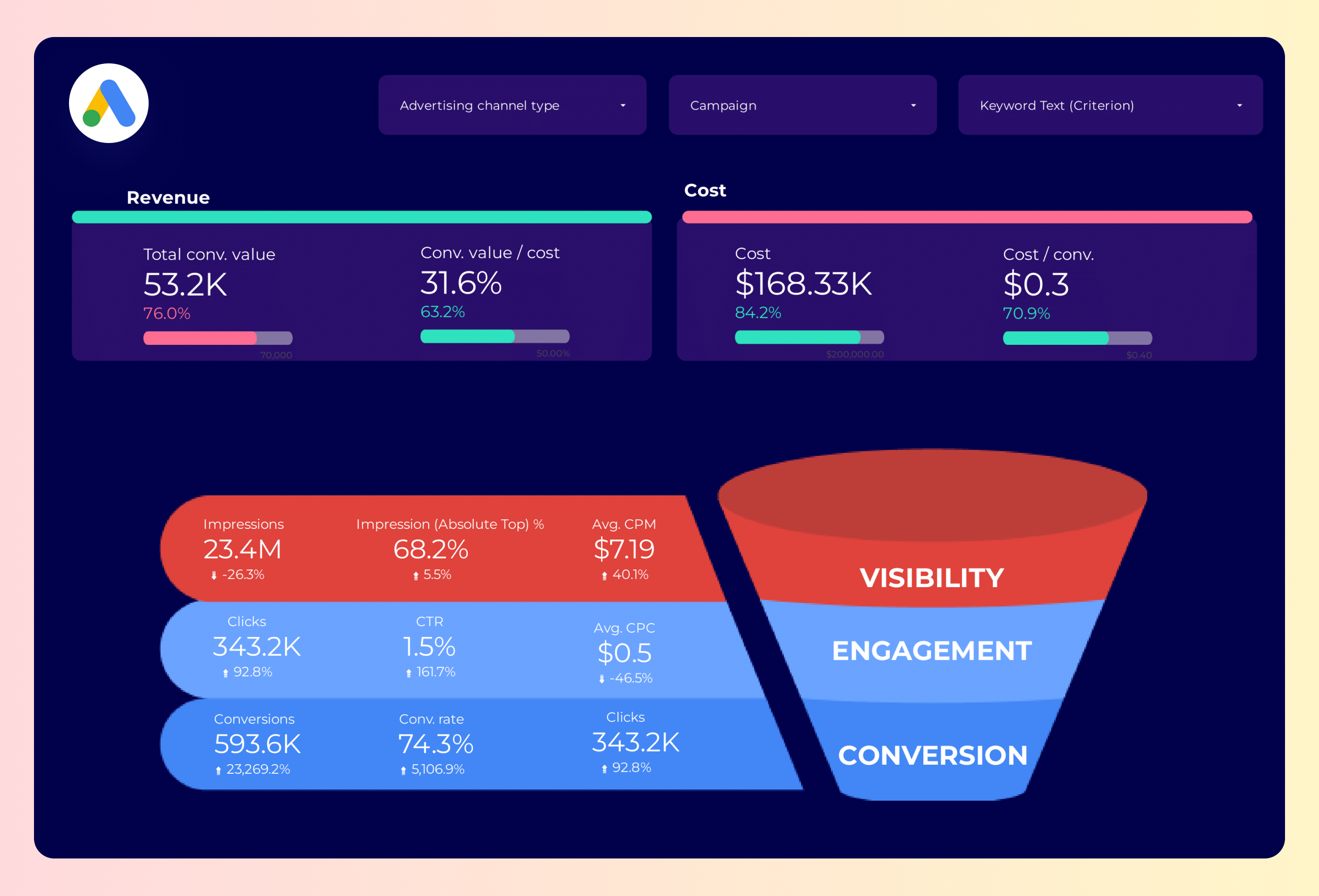
Google Ads Funnel Report template for Marketing teams and agencies
Track key metrics like conversion rate and CTR with the Google Ads Funnel report template. Analyze performance across campaigns, ad groups, and devices. Segment by time and audience type. Perfect for PPC specialists and marketers using Google and Facebook Ads to optimize paid media strategies and achieve specific marketing objectives.
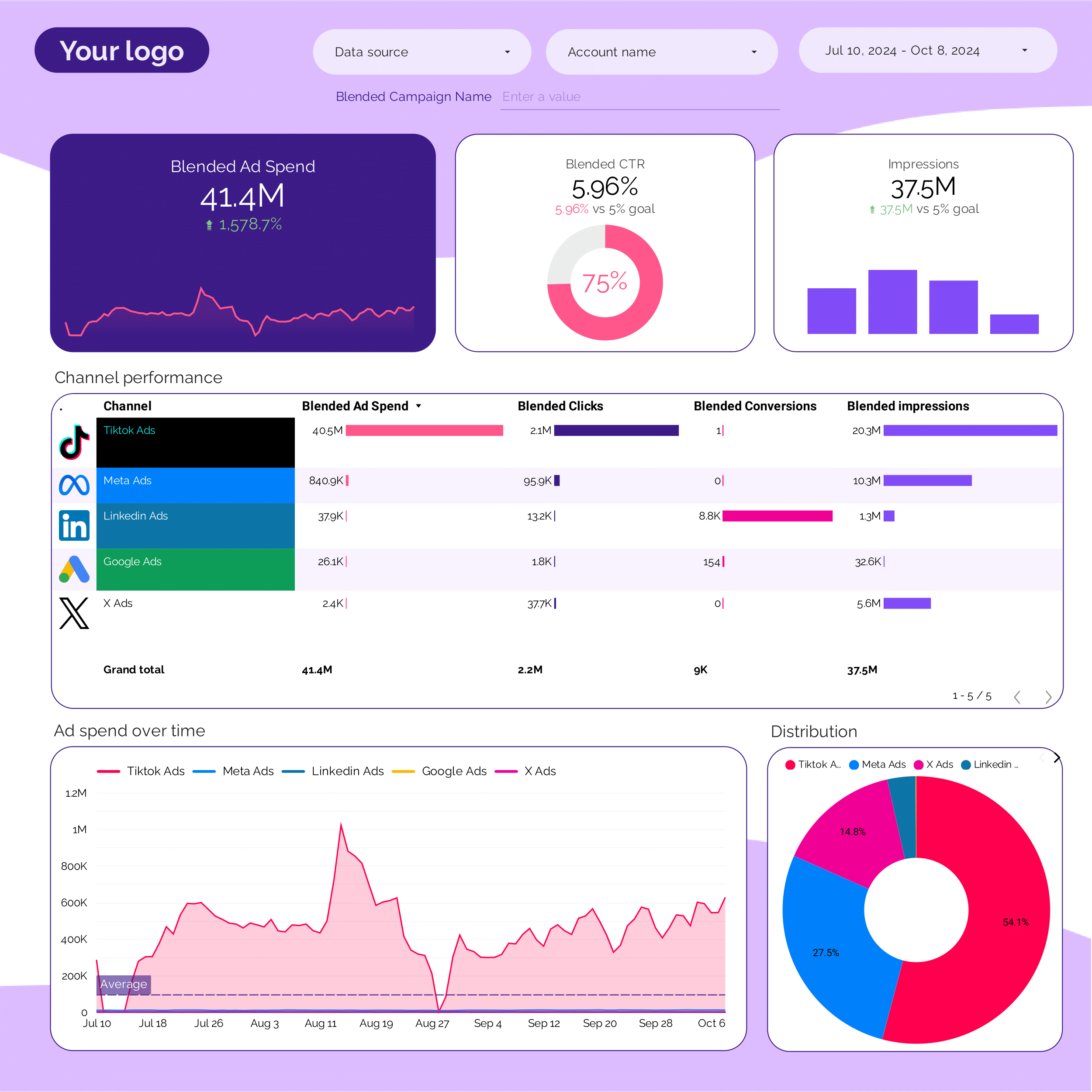
PPC Report template for Marketing teams and agencies
Optimize your PPC strategy with this report template. Track metrics like conversion rate, ROAS, and CTR across Facebook Ads, TikTok Ads, and Google Ads. Analyze by audience, channel, and time. Ideal for marketing teams to measure campaign performance and achieve objectives efficiently.
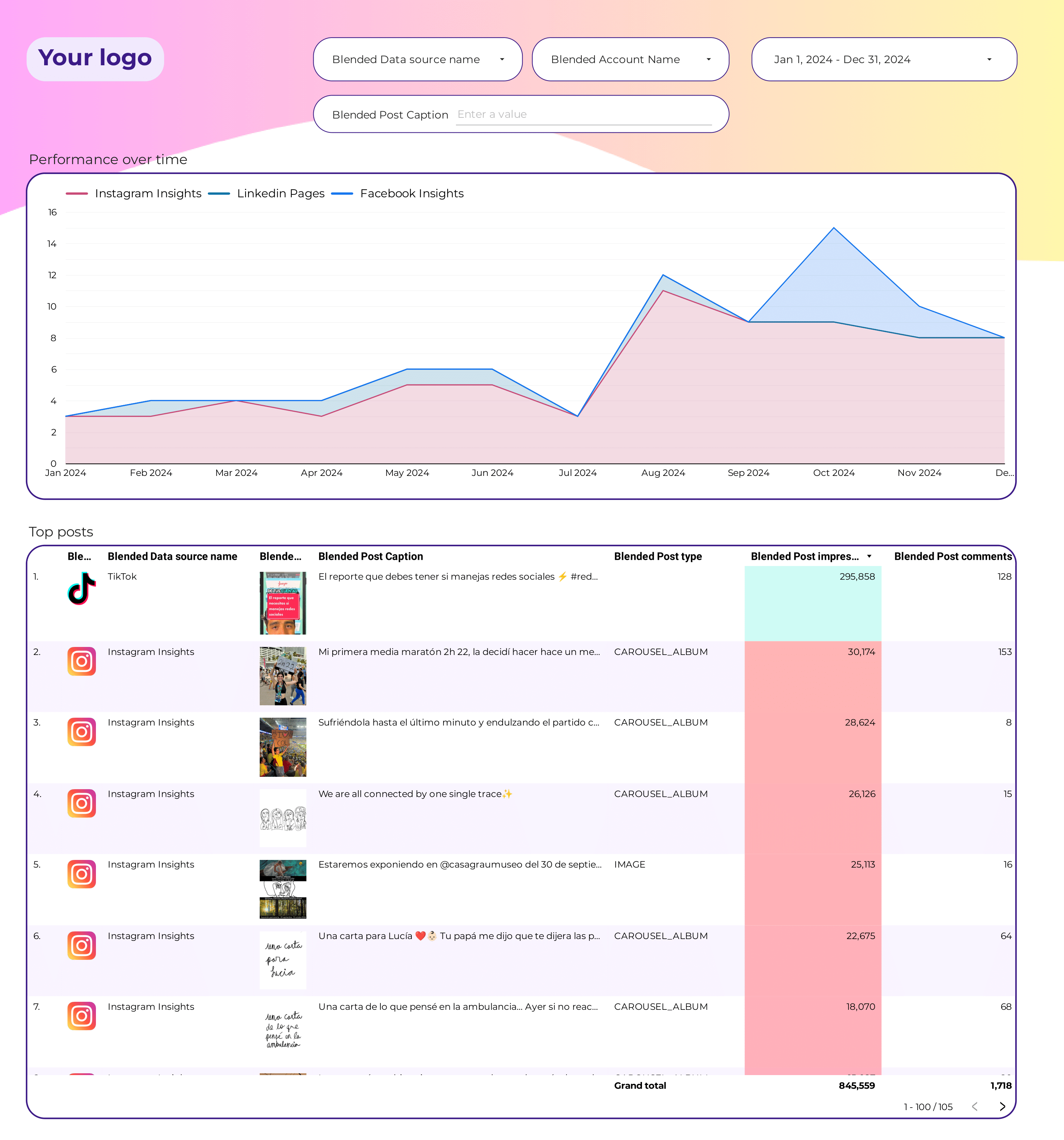
Social Media Engagement Report template for Marketing teams and agencies
Analyze key metrics like CTR, ROI, and conversion rates with the Social Media Engagement report template. Leverage data from Social Media and Instagram Insights to optimize performance. Ideal for marketers to track audience segmentation, channel selection, and message personalization, enhancing strategy across demographics and timeframes. Perfect for understanding engagement trends and improving marketing efforts.
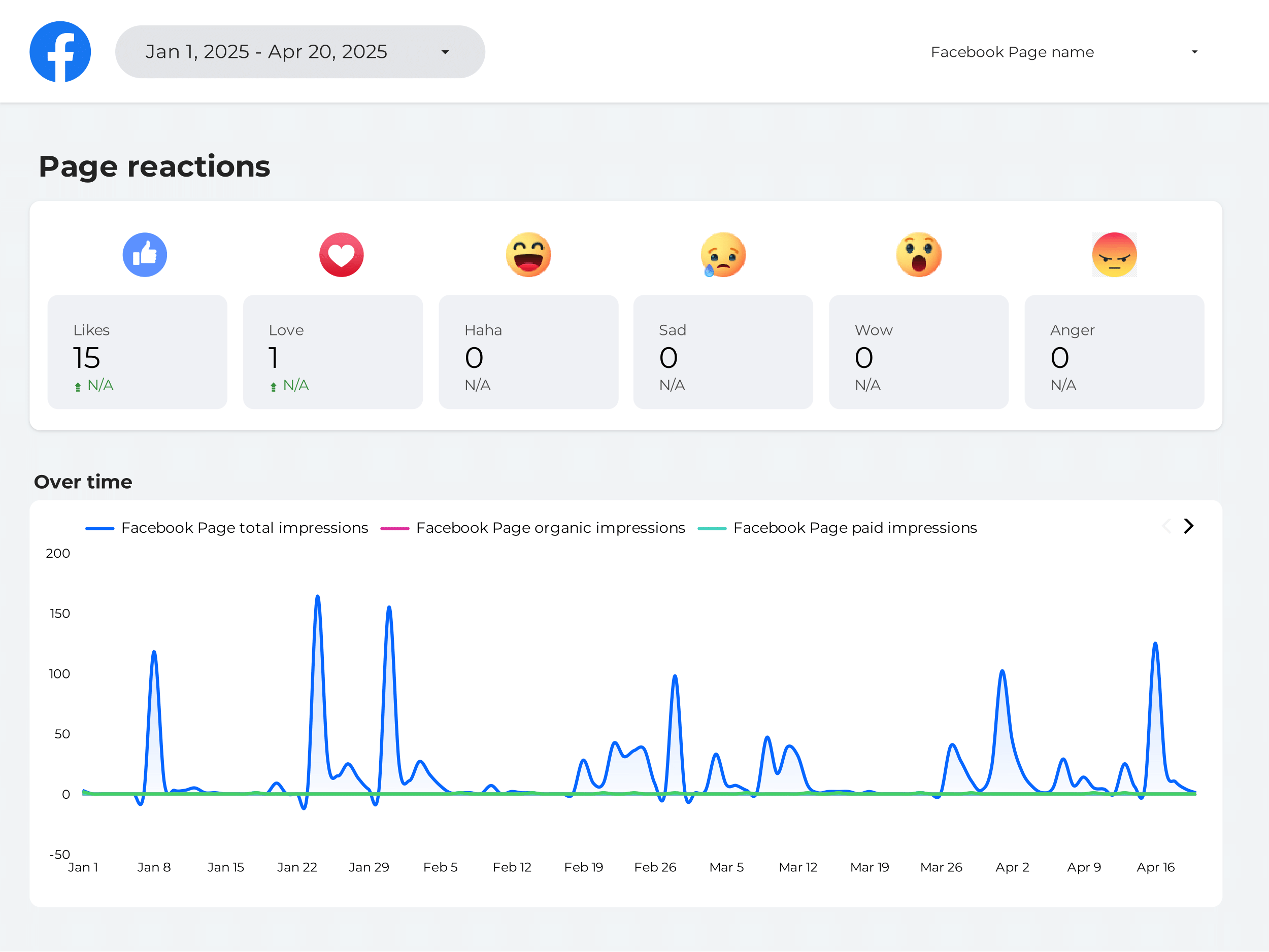
Brand awareness Report template for Marketing teams and agencies
Awareness report template consolidates key metrics like CTR, CPA, and conversion rate from Social Media, Instagram Insights, and LinkedIn Pages. Analyze demographics, psychographics, and behavior over time. Perfect for marketing teams to track performance and strategy, providing actionable insights into audience engagement and organic search ranking.
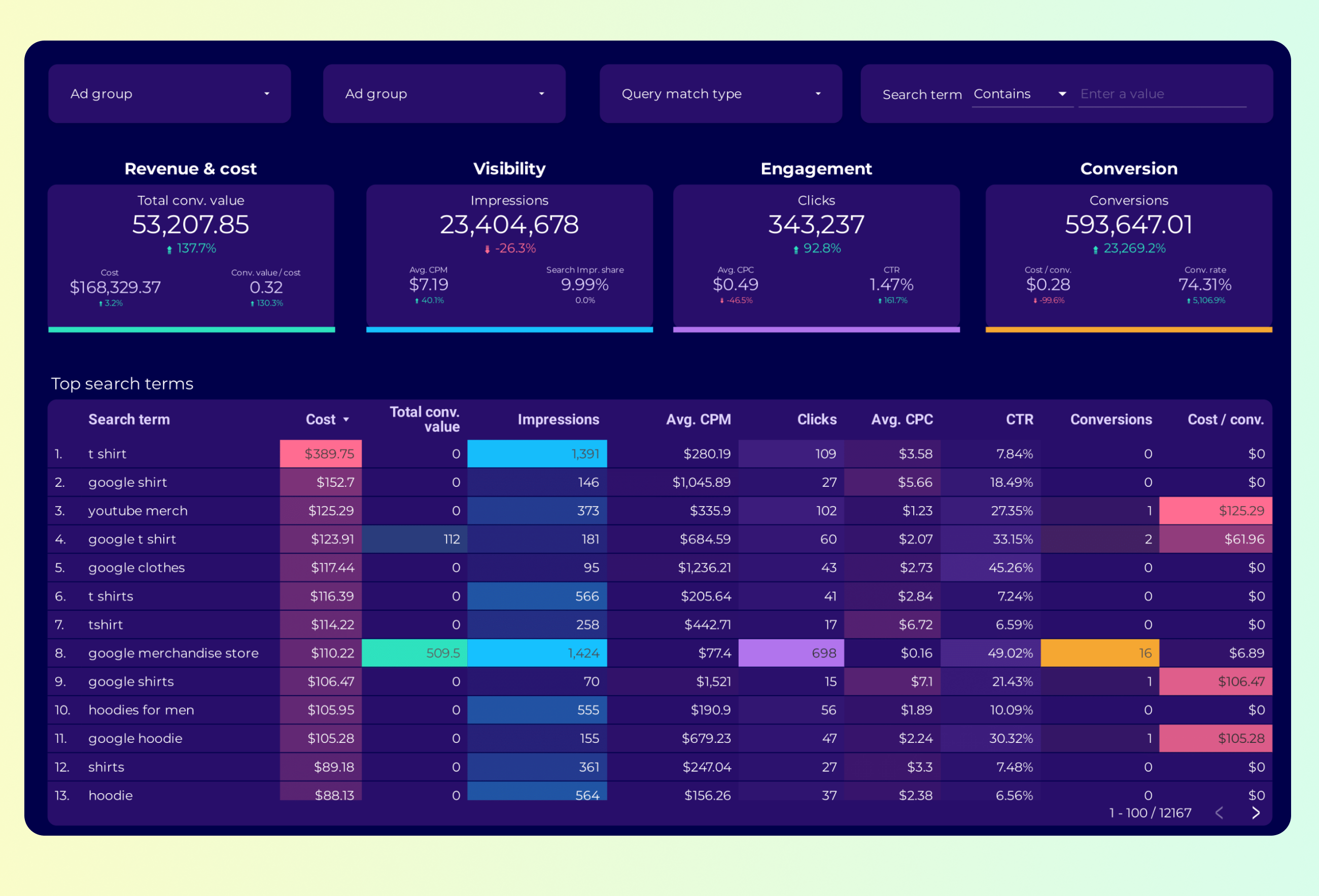
Google Ads Keyword analysis Report template for Marketing teams and agencies
Track key metrics like conversion rate, CTR, and impressions with the Google Ads Keyword analysis report template. Analyze performance by campaign type, device, and more. Consolidate data from Google Ads and Keywords. Ideal for PPC specialists to optimize strategy and meet marketing objectives. Segment by time for specific insights.
PPC budget tracking and pacing Report template for Marketing teams and agencies
Get the actual PPC budget tracking and pacing on Looker Studio template used by Porter to monitor PPC performance.
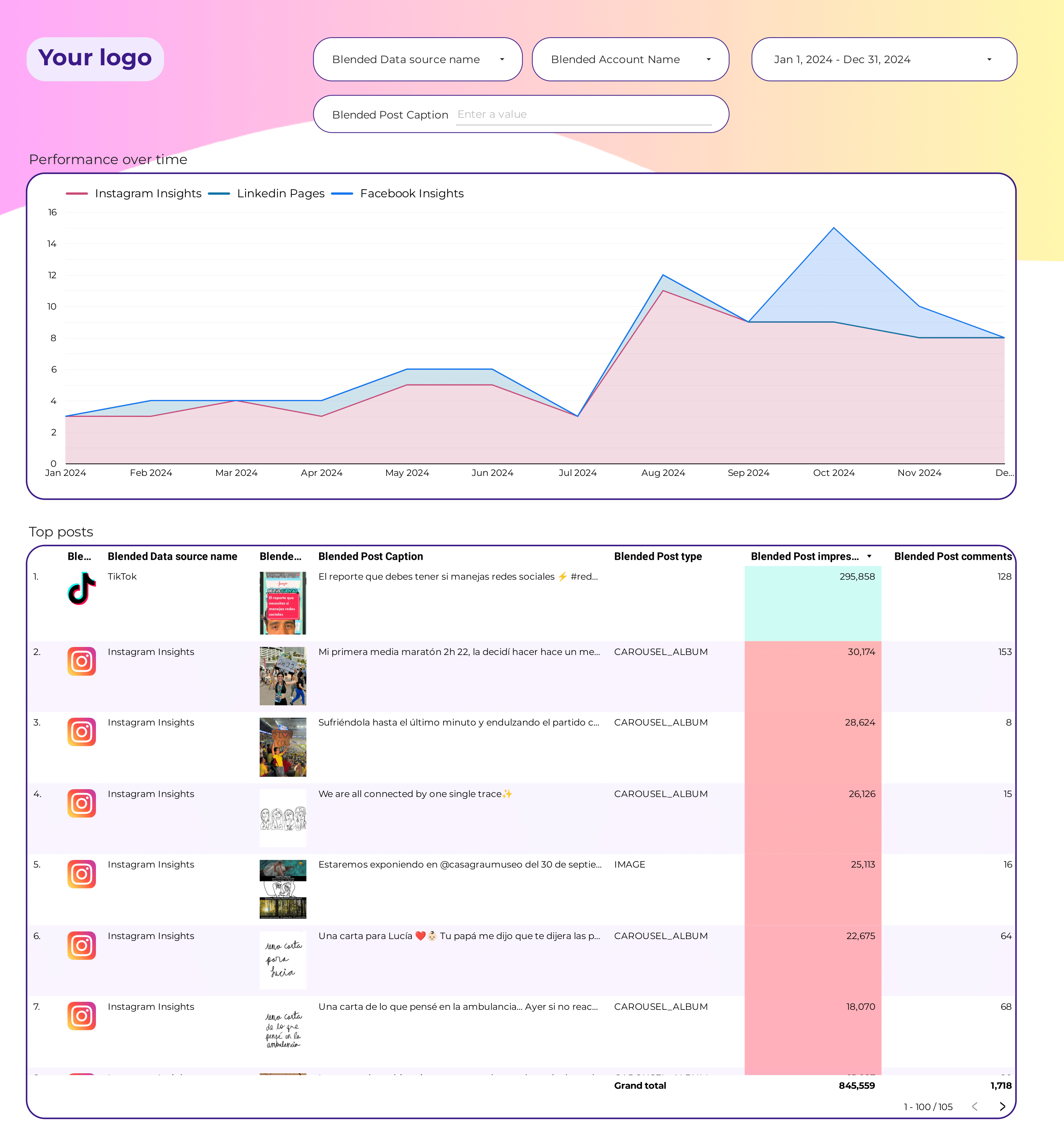
Social Media Post performance Report template for Marketing teams and agencies
Optimize your strategy with the Social Media Post performance report template. Track key metrics like conversion rate, ROI, and CTR. Segment by audience, platform, or campaign objective. Utilize data from Social Media and Instagram Insights. Ideal for marketing teams to enhance engagement and reach.
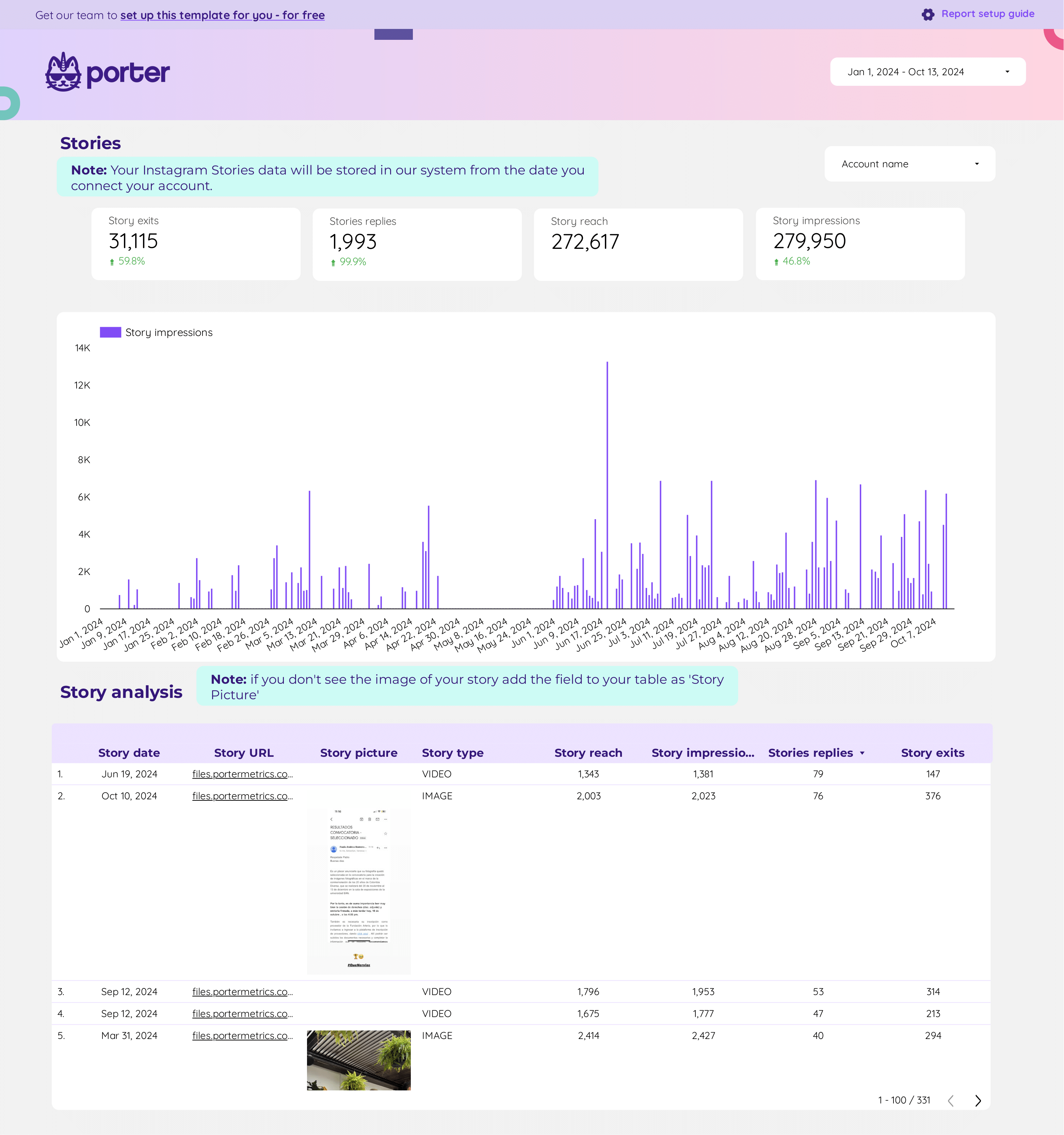
Community manager Report template for Marketing teams and agencies
Community manager Social Media report template tracks key metrics like conversion rate, cost per conversion, and engagement. Analyze dimensions such as campaign duration, budget, and audience demographics. Monitor likes, shares, and comments across Social Media platforms. Ideal for community managers to consolidate data and refine social media strategy.
